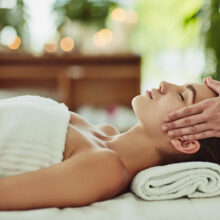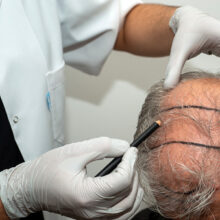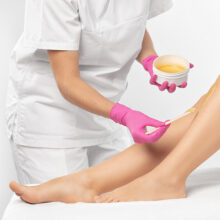Do I Need to Use a Different Sunscreen for Each Season?
- Published: Saturday, March 15th 2014
- in Beauty
SPF, UVA, UVB…the ABCs of sunscreen sound a lot like alphabet soup, a mush of information that can cause serious confusion when it comes to choosing which product to use and best practices apart from “Yes, I know not to bake in the sun (or tanning bed),” and “Yes, I know to diligently slather on my SPF-infused moisturizer each morning.” This uncertainty led me to contact Heather Rogers, MD, Seattle board-certified dermatologist at Madison Skin & Laser Center® and member of the American Academy of Dermatology, to answer a few burning questions. Here’s what she had to say, from, well, soup to nuts, starting with: Do I need to use a different sunscreen for each season?
Not exactly, Dr. Rogers says. “It’s not about the season—it’s about what you’re doing.” She recommends patients have two sunscreens on hand: a daily wear one, for going to work and when indoors most of the time; and a water-resistant workout or weekender sunscreen when sweating or in the sun longer. “Both of those need to be at least an SPF 30, which is what’s recommended by the American Academy of Dermatology (AAD).” And because most of us don’t apply sunscreen as heavily as we should, she also suggests bumping up your sunscreen’s strength so “you’ll get better protection even if you’re not using the full ounce you’re supposed to use to cover your face and body,” according to AAD standards.
When selecting a sunscreen, it’s important for the product to say “broad spectrum,” a term we’ve been hearing more about in the past year as sunscreens are becoming better labeled, Dr. Rogers continues. Broad spectrum protects you from UVA (associated with the development of skin cancers, UVA rays can penetrate through windows and are to blame for the breakdown of collagen and cause of brown spots, aka, prime signs of aging) and UVB (rays that are also linked to the formation of skin cancer and responsible for burning and tanning).
“When people tell me that they can’t find a sunscreen they like, I say let me work with you—there are so many options, you can find one out there,” Dr. Rogers says. So of course I had to ask what products or brands she recommends:
EltaMD: “I try to get my patients to use products that use zinc…Zinc has the broadest protection from UVA and UVB, and it’s incredibly safe; it’s what we put on babies’ bottoms. You can cover your kids in it, cover yourself in it,” Dr. Rogers says. The problem with zinc historically is that it could make you look like a clown, but now it has conformed in more cosmetically elegant form, she goes on.
EltaMD facial sunscreens have seven percent zinc or more (Dr. Rogers says she likes products possessing at least five percent) and there are several different products to choose, from tinting to moisturizing. (As an added bonus, they’re also non-comedogenic and sensitivity-, fragrance-, and paraben-free.) eltamd.com
SkinCeuticals: “It’s inexpensive and is a great product,” Dr. Rogers says. SkinCeuticals broad-spectrum sunscreens, available for a variety of skin types, spotlight Z-Cote® transparent zinc oxide (protecting skin from UVA rays) and SPF (to prevent UVB damage). From $34-$40; skinceutials.com
DermaQuest® ZinClear SPF 30: There’s more than 18 percent zinc in this product. “You can use it and not look like a clown and have really strong protection,” Dr. Rogers shares. “I use it on my face in the summer.” 2.0 fl oz.; dermaquestinc.com
Oil of Olay Pro-X Age Repair Lotion with Sunscreen Broad Spectrum SPF 30: If you choose to use a moisturizer with SPF, it should be at least 30 and broad spectrum, she tells us. Olay’s Pro-X Age Repair Lotion is designed to protect the skin from UVA and UVB sun exposure and hydrate to fight aging signs. $32.99 (prices may vary); olay.com
Colorescience powder sunscreen: “People do a pretty good job at putting on sunscreen the first time, you just have to reapply, particularly in the summer,” Dr. Rogers says. She encourages patients to put a powder sunscreen in their purse and reapply to get good sun protection walking home from work, going to lunch, etc. Colorescience’s Sunforgettable® mineral sunscreens collection comes in SPF 30, 35, and 50 (we like the Sunforgettable Mineral Sunscreen Brush SPF 50; $62). colorescience.com
UV-protectant Rash Guards: “JCrew has quite cute rash guards—they’re readily available, and you don’t have to put sunscreen on half of your body,” Dr. Roger adds, while noting that you do need to worry about reapplying to the places that are exposed. From $29.50; jcrew.com
But remember, sunscreens have expiration dates on them, and “it’s usually three years,” Dr. Rogers states. That being said, “you shouldn’t have a bottle of sunscreen for three years—if you do, you’re not using it correctly.”




